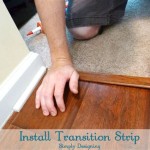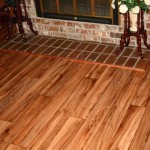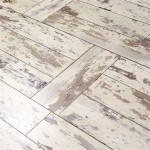What Flooring Is Best For Dogs?
Selecting appropriate flooring for a household with dogs requires careful consideration. The ideal flooring material must balance the needs of the dog, the aesthetic preferences of the homeowner, and the practical considerations of maintenance and durability. Several factors contribute to the suitability of flooring for canine companions, including resistance to scratches, water resistance, ease of cleaning, and comfort for the dog.
Durability and Scratch Resistance
One of the primary concerns for dog owners when choosing flooring is its ability to withstand the wear and tear associated with canine activity. Dogs, particularly larger breeds, can cause significant scratching with their nails. Therefore, flooring materials with high scratch resistance are preferable.
Hardwood, while aesthetically pleasing, is generally not considered the most durable option for homes with dogs. Softer woods, such as pine, are particularly susceptible to scratching and denting. Even harder woods, like oak, can be damaged over time. The finish applied to hardwood flooring also plays a role in its durability. Polyurethane finishes offer greater protection against scratches and moisture than wax finishes. If hardwood is desired, consider distressed or reclaimed wood, as these options often hide scratches and imperfections more effectively.
Laminate flooring offers a more scratch-resistant alternative to hardwood. Laminate is constructed with a durable wear layer that can withstand a significant amount of abuse. The quality of the laminate flooring is directly proportional to its scratch resistance. Higher-quality laminates feature thicker wear layers, providing greater protection against damage. However, it is important to acknowledge that laminate can still be scratched, especially by larger dogs or those with particularly active behaviors. Additionally, cheaper laminate flooring can often sound hollow when walked upon, which can be amplified by the click of dog nails. This can be mitigated by installing a high-quality underlayment.
Tile, particularly porcelain tile, is among the most durable and scratch-resistant flooring options available. Porcelain tile is extremely hard and dense, making it highly resistant to scratches from dog nails. It is also resistant to staining and water damage, which is a significant advantage in homes with pets. However, the hardness of tile can be a drawback in terms of comfort for dogs, particularly older dogs or those with joint problems. The grout lines between tiles can also accumulate dirt and debris, requiring diligent cleaning to maintain a hygienic environment.
Luxury vinyl planks (LVP) and luxury vinyl tiles (LVT) offer a good balance of durability and aesthetics. LVP and LVT are designed to mimic the look of hardwood and tile, respectively, while providing superior water resistance and scratch resistance. High-quality LVP and LVT products feature a thick wear layer that can withstand significant wear and tear from dogs. They are also relatively easy to clean and maintain. The softness of vinyl compared to tile makes it a more comfortable surface for dogs to walk and lie on.
Concrete flooring, when properly sealed and finished, can be a highly durable and scratch-resistant option for dog owners. Concrete is extremely hard and resistant to damage. It can also be stained and polished to create a variety of aesthetic effects. However, like tile, concrete can be cold and hard, which may be uncomfortable for dogs. Rugs and mats can be used to provide warmer and softer areas for dogs to rest.
Water Resistance and Cleanability
Accidents are inevitable in homes with dogs, particularly puppies or senior dogs. Therefore, flooring materials that are resistant to water and easy to clean are crucial for maintaining a hygienic and odor-free environment. The ability to quickly and effectively clean up spills and accidents can prevent permanent staining and damage to the flooring.
Hardwood is particularly vulnerable to water damage. Spills and accidents can quickly penetrate the wood, leading to staining, warping, and even mold growth. While some hardwood flooring is treated with water-resistant finishes, these finishes are not completely waterproof. Prolonged exposure to moisture can still cause damage. Regular cleaning and maintenance are essential to protect hardwood floors from water damage.
Laminate flooring offers better water resistance than hardwood, but it is not completely waterproof. The seams between laminate planks can be susceptible to water penetration. If water seeps beneath the laminate, it can cause swelling and damage to the core layer. It is important to clean up spills promptly and avoid excessive moisture when cleaning laminate floors. Some laminate flooring products are specifically designed to be water-resistant, offering enhanced protection against water damage.
Tile, especially porcelain tile, is virtually waterproof. It is impervious to water damage and will not stain or warp when exposed to moisture. This makes tile an excellent choice for areas that are prone to spills and accidents, such as kitchens and bathrooms. However, the grout lines between tiles can be porous and prone to staining. Regular sealing of the grout is necessary to maintain its cleanliness and prevent the absorption of liquids.
Luxury vinyl planks (LVP) and luxury vinyl tiles (LVT) are highly water-resistant, making them a practical choice for homes with dogs. They are designed to withstand spills and accidents without staining or warping. LVP and LVT are also easy to clean, requiring only a damp mop and mild detergent. This makes them a low-maintenance flooring option for busy dog owners.
Concrete flooring, when properly sealed, is also highly water-resistant. The sealant prevents water from penetrating the concrete, protecting it from staining and damage. However, the sealant must be reapplied periodically to maintain its effectiveness. Unsealed concrete is porous and can absorb liquids, leading to staining and odor retention.
Beyond water resistance, the ease of cleaning is paramount. Smooth, non-porous surfaces are generally easier to clean than textured or porous surfaces. Flooring that can be quickly and effectively cleaned with a damp mop and mild detergent is ideal for homes with dogs. The use of harsh chemicals should be avoided, as they can damage the flooring and potentially harm the dog.
Comfort and Safety for Dogs
While durability and water resistance are important considerations, the comfort and safety of the dog should not be overlooked. The flooring material should provide a comfortable surface for the dog to walk, lie, and play on. It should also be safe and non-toxic, preventing any harm to the dog's health. The texture of the flooring can also impact a dog's comfort and mobility.
Hardwood can be a relatively comfortable surface for dogs, especially when combined with rugs or mats. However, the hardness of hardwood can be problematic for older dogs or those with joint problems. The smooth surface of hardwood can also be slippery, which can increase the risk of falls and injuries. Regular trimming of the dog's nails can help to improve traction on hardwood floors.
Laminate flooring, like hardwood, can be hard and slippery. The smooth surface of laminate can make it difficult for dogs to gain traction. This can be particularly problematic for older dogs or those with mobility issues. The use of rugs and mats can provide added traction and cushioning. The underlayment used beneath laminate flooring can also affect its comfort level. A thicker, more cushioned underlayment can provide a softer surface for dogs to walk on.
Tile and concrete are generally considered to be the least comfortable flooring options for dogs. The hardness of these materials can be particularly problematic for older dogs or those with joint problems. The coldness of tile and concrete can also be uncomfortable, especially during the winter months. Rugs and mats are essential for providing warmer and softer areas for dogs to rest on these types of flooring.
Luxury vinyl planks (LVP) and luxury vinyl tiles (LVT) offer a good balance of comfort and durability. Vinyl is softer than hardwood, tile, or concrete, making it a more comfortable surface for dogs to walk and lie on. It also provides better traction than smooth hardwood or laminate. The textured surface of some LVP and LVT products can further enhance traction. It's important to research the specific LVP or LVT being considered, as some can be more slippery than others.
Rugs and mats are an essential addition to any flooring surface in a home with dogs. They provide added cushioning, traction, and warmth. They can also help to protect the flooring from scratches and damage. Choose rugs and mats that are specifically designed for use with pets, as these products are often more durable and stain-resistant. Regularly cleaning or replacing rugs and mats will maintain a hygienic environment and prolong the life of the flooring.
Beyond comfort, the safety of the flooring material is crucial. Avoid flooring materials that contain harmful chemicals or toxins. Ensure that any sealants or finishes used are non-toxic and safe for pets. Regularly inspect the flooring for any signs of damage, such as splinters or loose pieces, which could pose a hazard to the dog.

What S The Best Flooring For Dogs Inc

How To Choose The Best Flooring For Dogs Home Depot

How To Choose The Best Flooring For Dogs Home Depot

Pet Friendly Flooring Guide
.png?strip=all)
What S The Best Dog Friendly Flooring America

How To Choose The Best Flooring For Dogs Home Depot

How To Choose The Best Flooring For Dogs Home Depot

Best Flooring For Dogs Things To Keep In Mind Hardwood Bargains Blog Www Hardwoodbargains Com When Choosing New

What S The Best Flooring For Dogs Inc

How To Choose The Best Flooring For Dogs Home Depot
Related Posts








